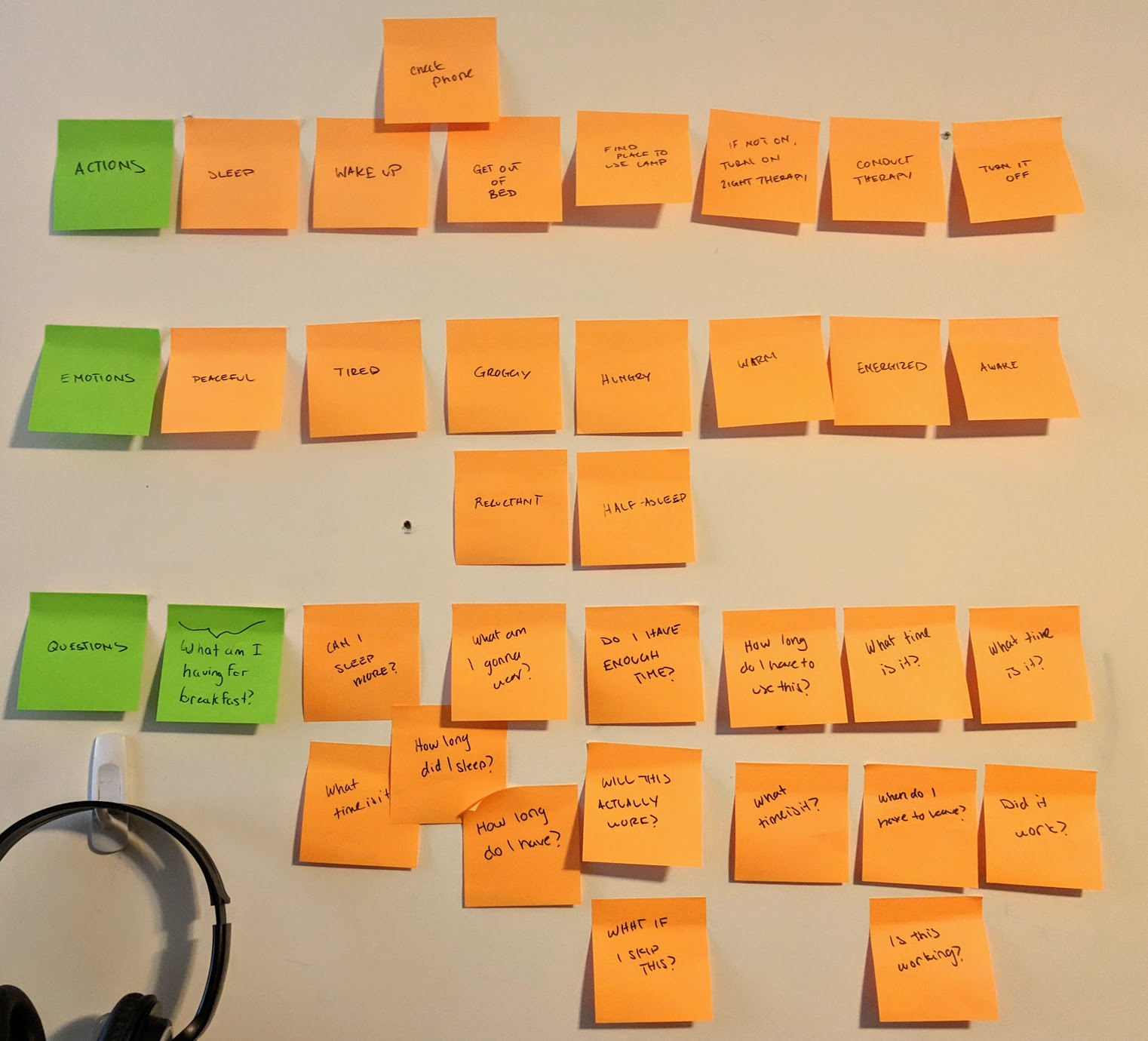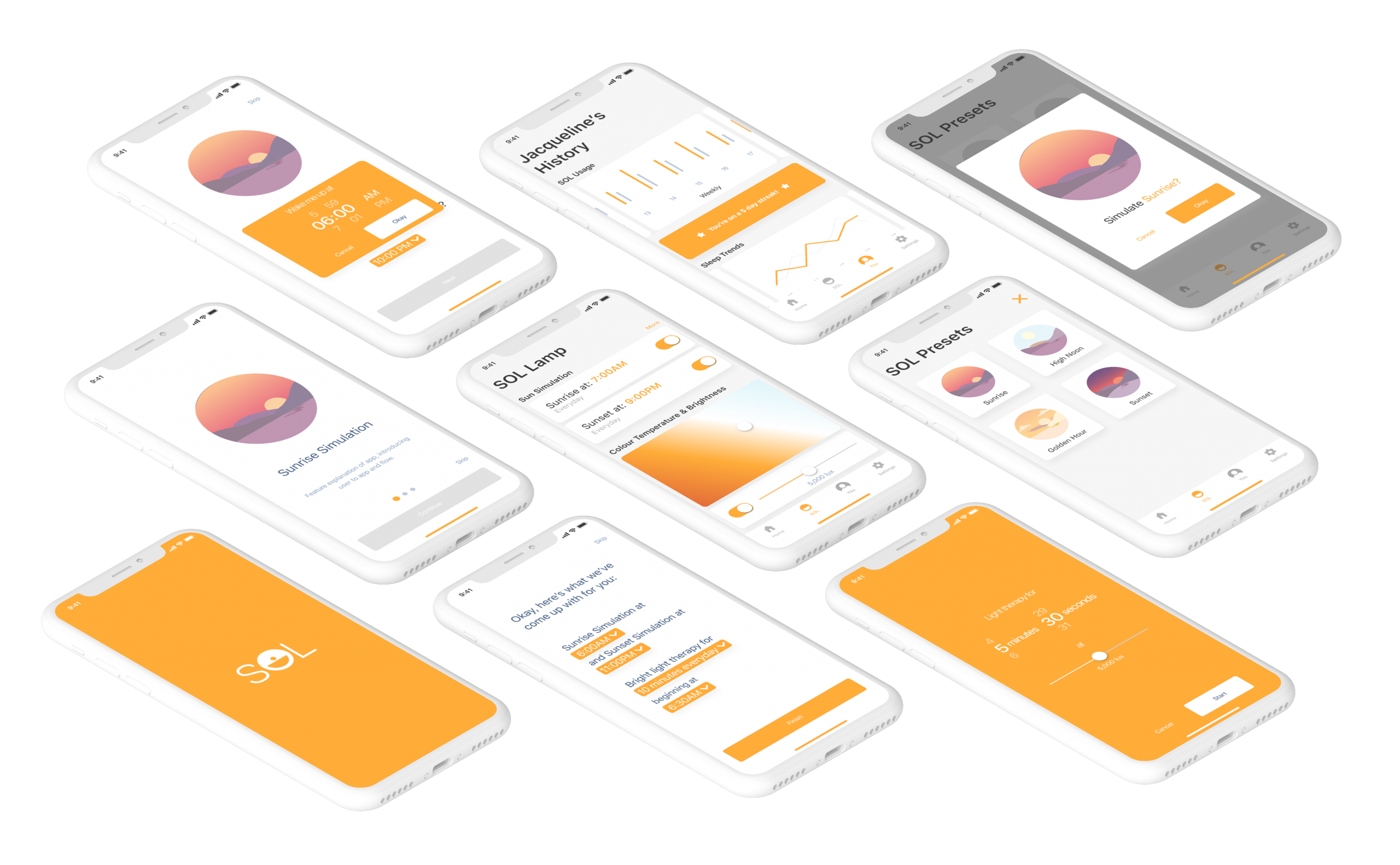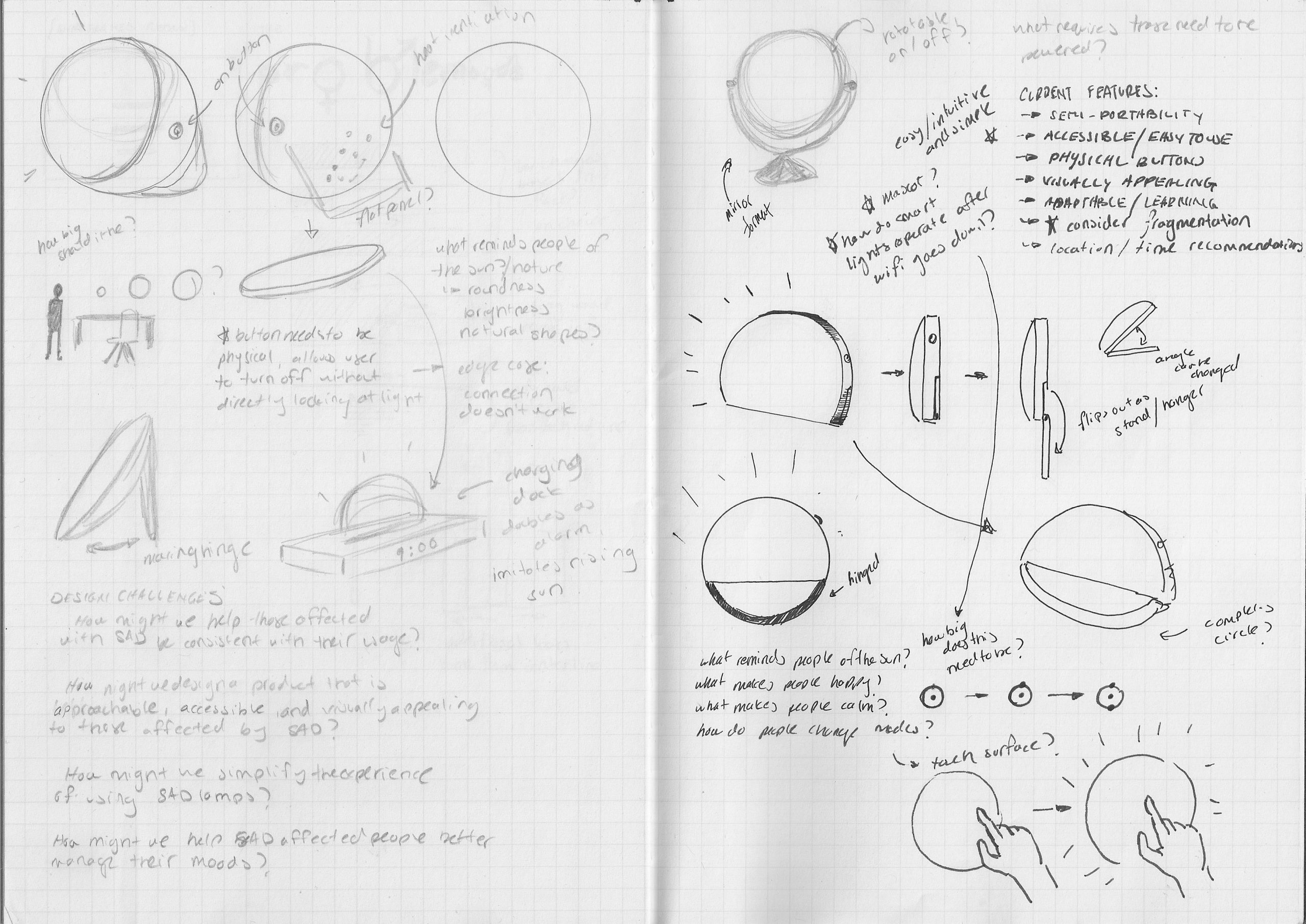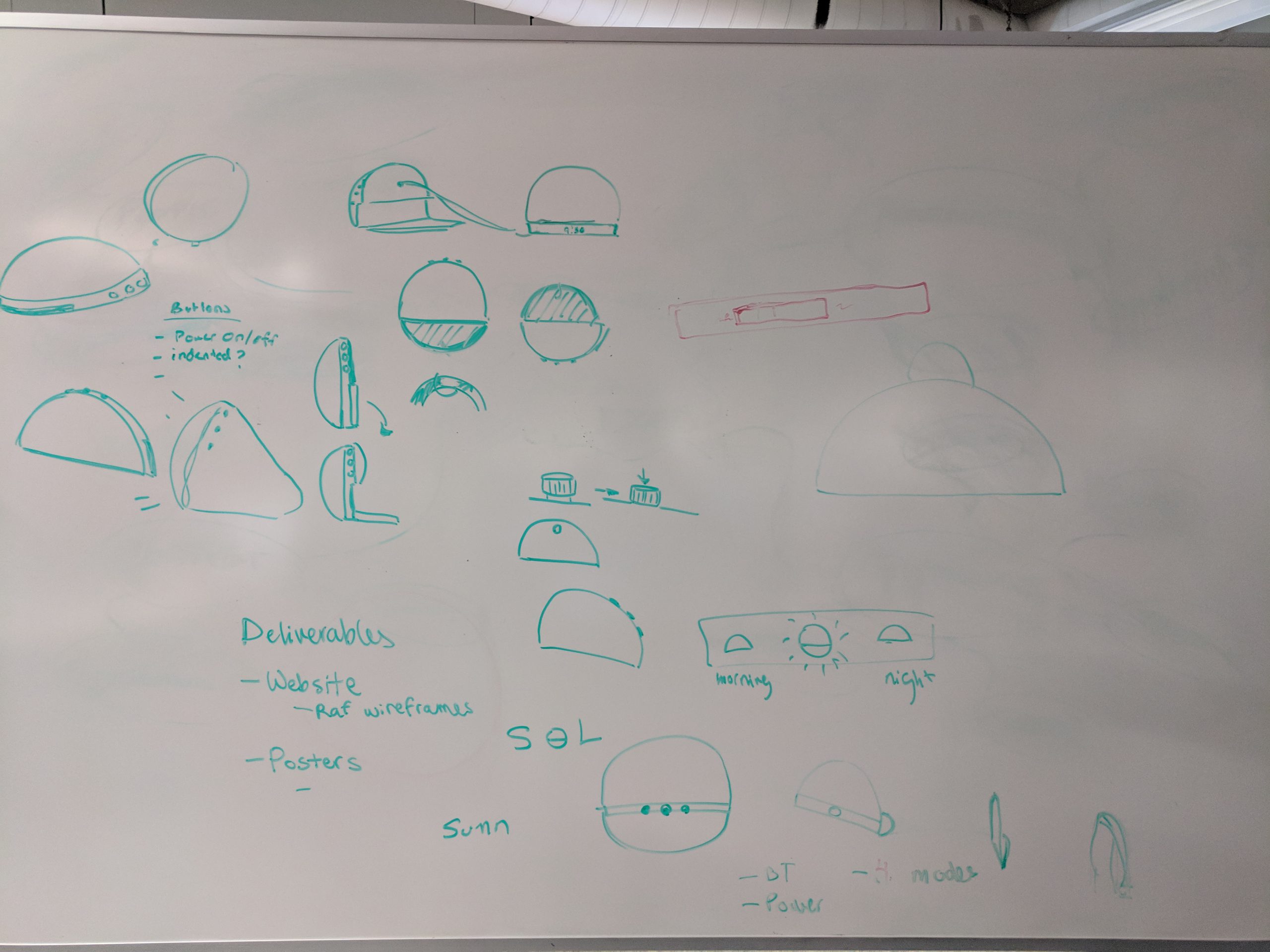Sol
Empowering smart light therapy.

Role
User Research, 3D Rendering, Project Management, User Interface Design
Timeline
October - December 2018 (2 months)
Tools Used
Figma, Photoshop, Illustrator, Rhino 3D, InVision
Team
Rafael Flora, Jayde Norstrom, Jaeden Theriault, Ailia Jafri
Light therapy is an obscure solution to a mood disorder people typically write off as “feeling down”. Affected people need a simple solution that reduces stigma, validates their condition, and fits into their daily lives.
SOL is a smart light therapy lamp designed to simplify the process of light therapy for those affected by seasonal affective disorder (SAD). This project was entirely collaborative; learning, visualizing and creating together along with all of the hurdles that came with it.
THE PROBLEM
Seasonal Affective Disorder (SAD) is a mood disorder affecting around 20% of Canadians, also making up about 10% of all depression cases. A common solution to help reduce symptoms of SAD is light therapy. However, light therapy offers some complications, such as users not knowing how to conduct it properly, consistency in it’s use, and current light therapy solutions looking medical and sterile, creating a stigma and not fitting into their daily lives.
OUR DESIGN CHALLENGE
How might we design a product that better informs and facilitates the use of light therapy?
OUR SOLUTION
Sol is a light therapy lamp that simplifies the light therapy process. Sol lets users automate their light therapy sessions, fitting into any busy schedule, and allows them to track their progress, empowering by visualizing their journey through light therapy and the improvements they have made. The Sol lamp along with it’s companion app work together to aid users affected by seasonal affective disorder by simplifying the light therapy process and regulating their circadian rhythm—allowing them to wake up easier for light therapy, and sleep easier to relax them during the night. Doing this, Sol keeps the user on track for their light therapy and their daily lives.


The Beginning

UNDERSTANDING THE USER
We started this project with conversation. Talking to each other, our peers, and our instructor on what seasonal depression is and if it affected them. Interestingly, most people didn’t know the medical term for the disorder, often dismissing it as the “winter blues”. We created a PACT analysis to create a better understanding internally on seasonal affective disorder, it’s causes, and the pain points we could solve for.

Informed by our PACT analysis and personas, we began journey mapping. Since light therapy is most effective when one wakes up, we went through a typical morning and found that the most common thought in the morning is a feeling of being rushed and skepticism when it came to a new part of a routine. From there, we created a set of design principles that focused on the user.
OUR DESIGN PRINCIPLES
Simple — The product must be simple to use, with little to no friction in our user's daily lives.
Empowering — The product must empower the user, giving them a sense of control
Delightful & Familiar — The product must be delightful to use, and be familiar enough to reduce the learning curve of using it
Informative — The product must inform the user of their progress, encouraging them to to continue to use it and keep consistent
IDEATION
The Smart Device

OUR FINAL SOLUTION
Through our 4 week sprint of creating the design for SOL, several features came to light when thinking of this as a smart object for the home and thinking of the product as something the user would actually want to buy. We found that flexibility in it’s placement was important not only for the user, but for the conduction of light therapy, hence the hinge allowing the lamp to be placed on a table or to be hung from a wall. We also found that users wanted even more flexibility to the hinge, akin to something like the hinge present in the Microsoft Surface line of products. Moving forward, we could revisit the design of the hinge to function on several different angles instead of just two.

HOW IT WORKS
The App


In Depth Onboarding
Sol effectively introuduces the user how to use the product and eases them into the idea of utilizing light therapy in their daily routine.
Empowering Statistics
Users can track how long they have been using SOL and the improvements they’ve made, empowering them to understand the importance of light therapy and it’s effect on their lives.


Circadian Rhythm Regulation
In order to use SOL, users need to be able to wake up on time to use it. Sunrise and sunset simulation allow users to wake up and sleep easier, regulating their circadian rhythm while also ensuring a good night’s sleep, reducing effects of SAD at the same time.
Informative Dashboard
Essential information and settings allow users to see the information they want and change any settings with as little friction as possible so they can get on with their day.


CONCLUSION AND TAKEAWAYS
Throughout this project collaboration was our greatest strength but also our greatest hurdle. Being students and working at the same time, managing everyone’s schedules for weekly meetings and check ins outside of class was a challenge, but being able to work on this as a team with different skillsets is what built SOL up to where it is. Every part of the design process was informed not only by feedback from our team internally, but also from feedback from peers, target users, and our professor.
Solving a complex issue with the timeline given to us created some doubt within me, especially without a concrete solution to work with. But through the process and working with the team I learned to put more faith not only in my team but myself to create solutions when there seem to be nothing to look for.
Designing a product that people could really use and having real conversations with people about how and why they would use it was a great experience, and it’s something I look forward to doing again with the next project.











